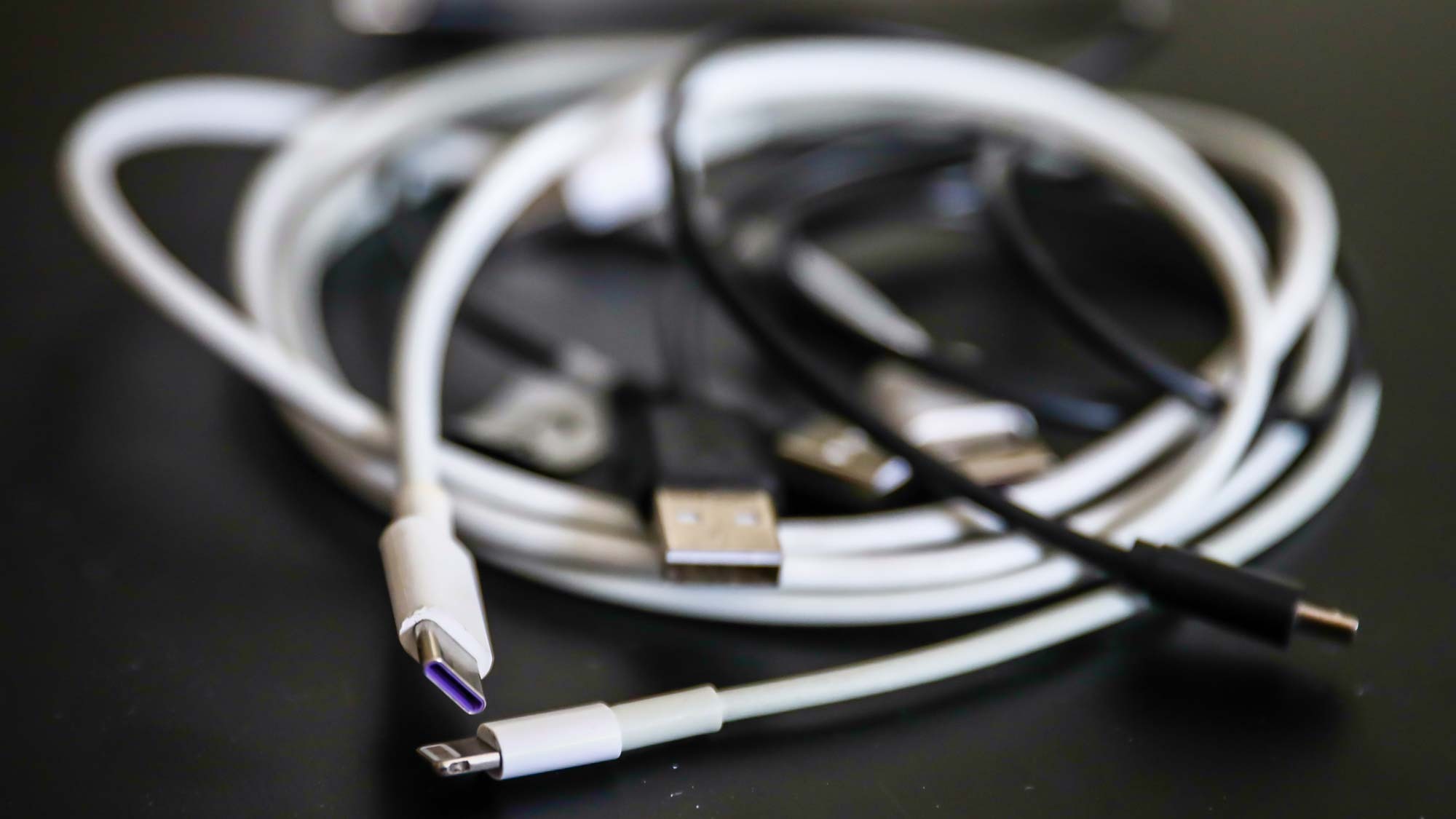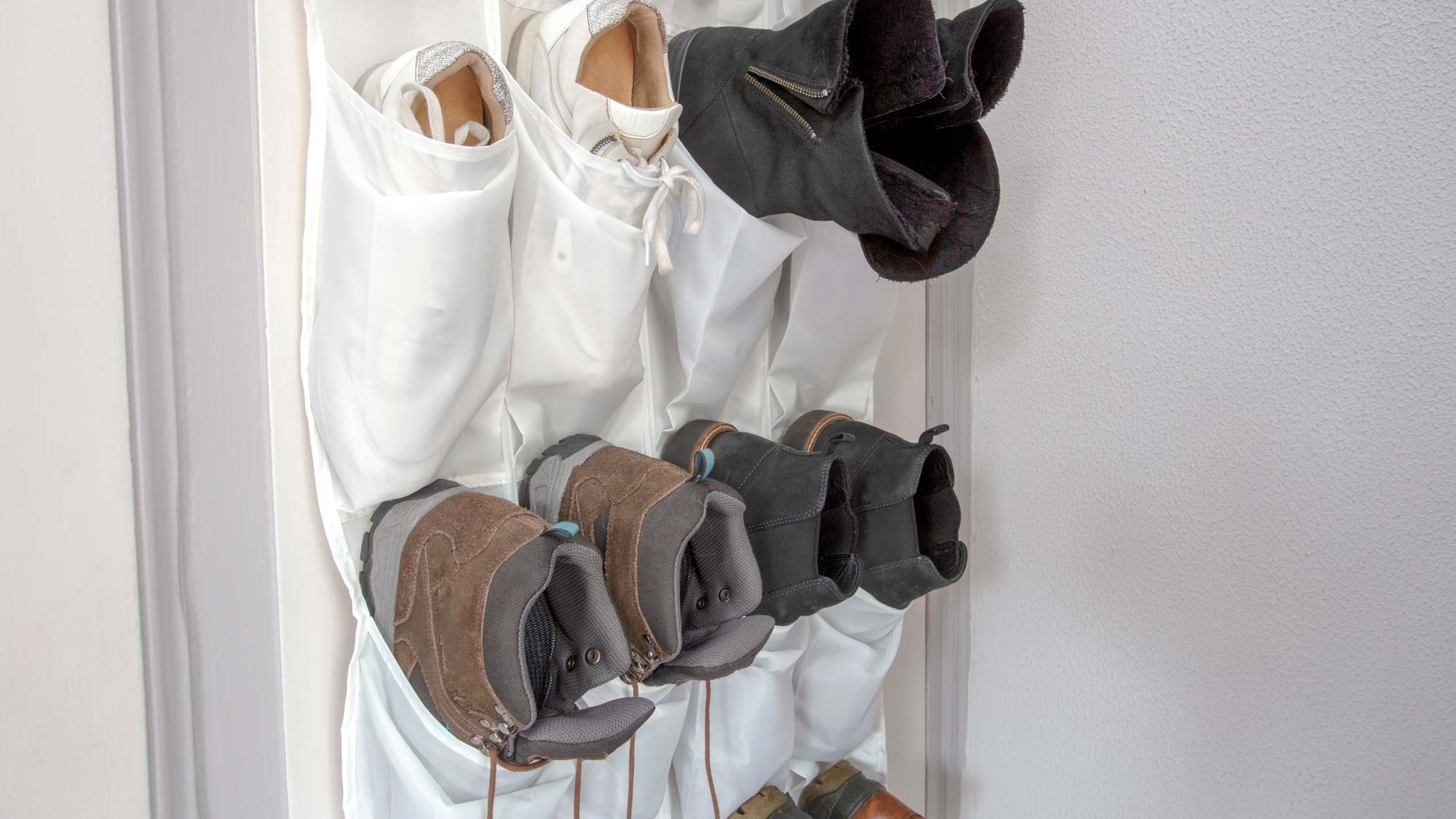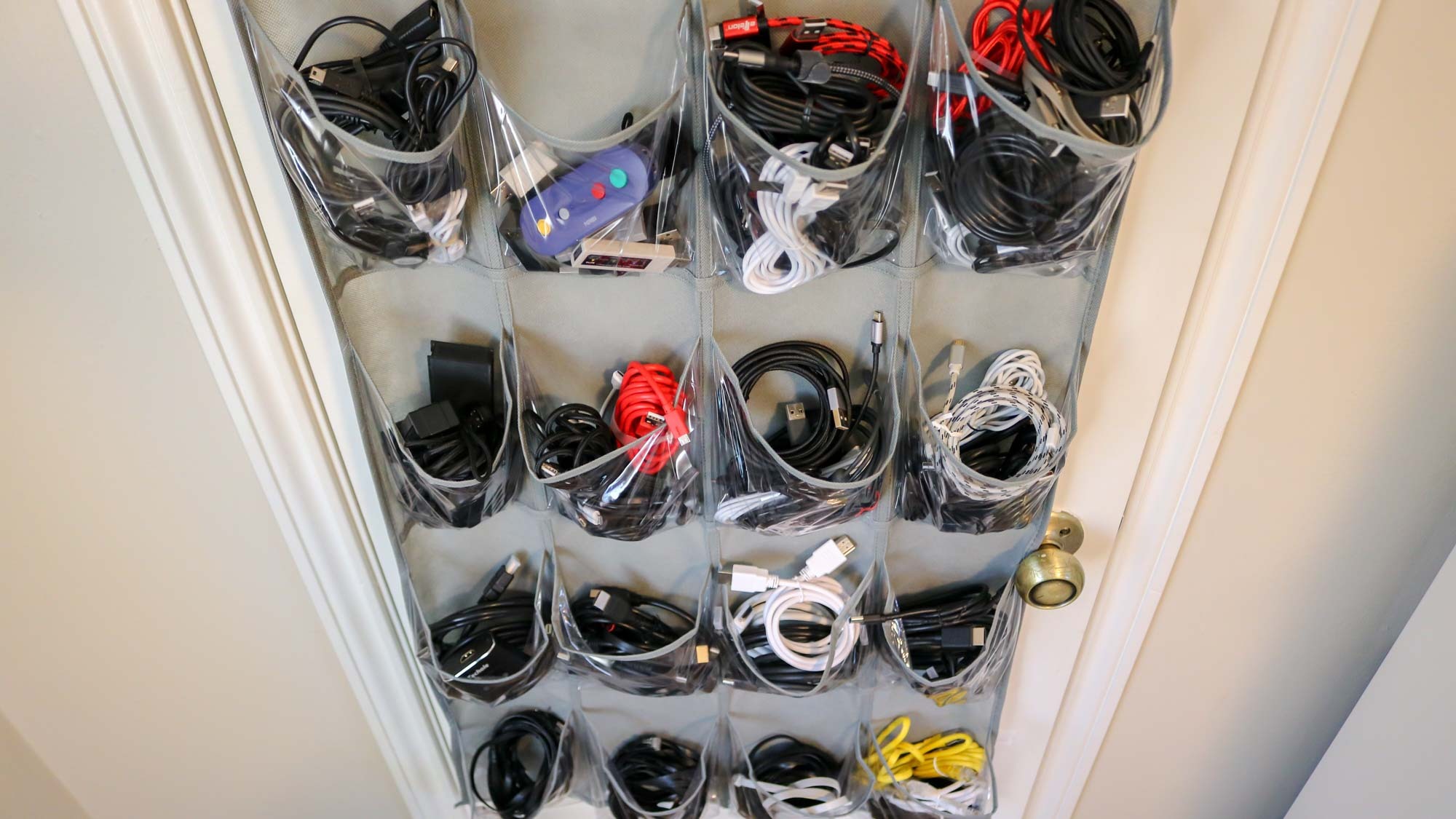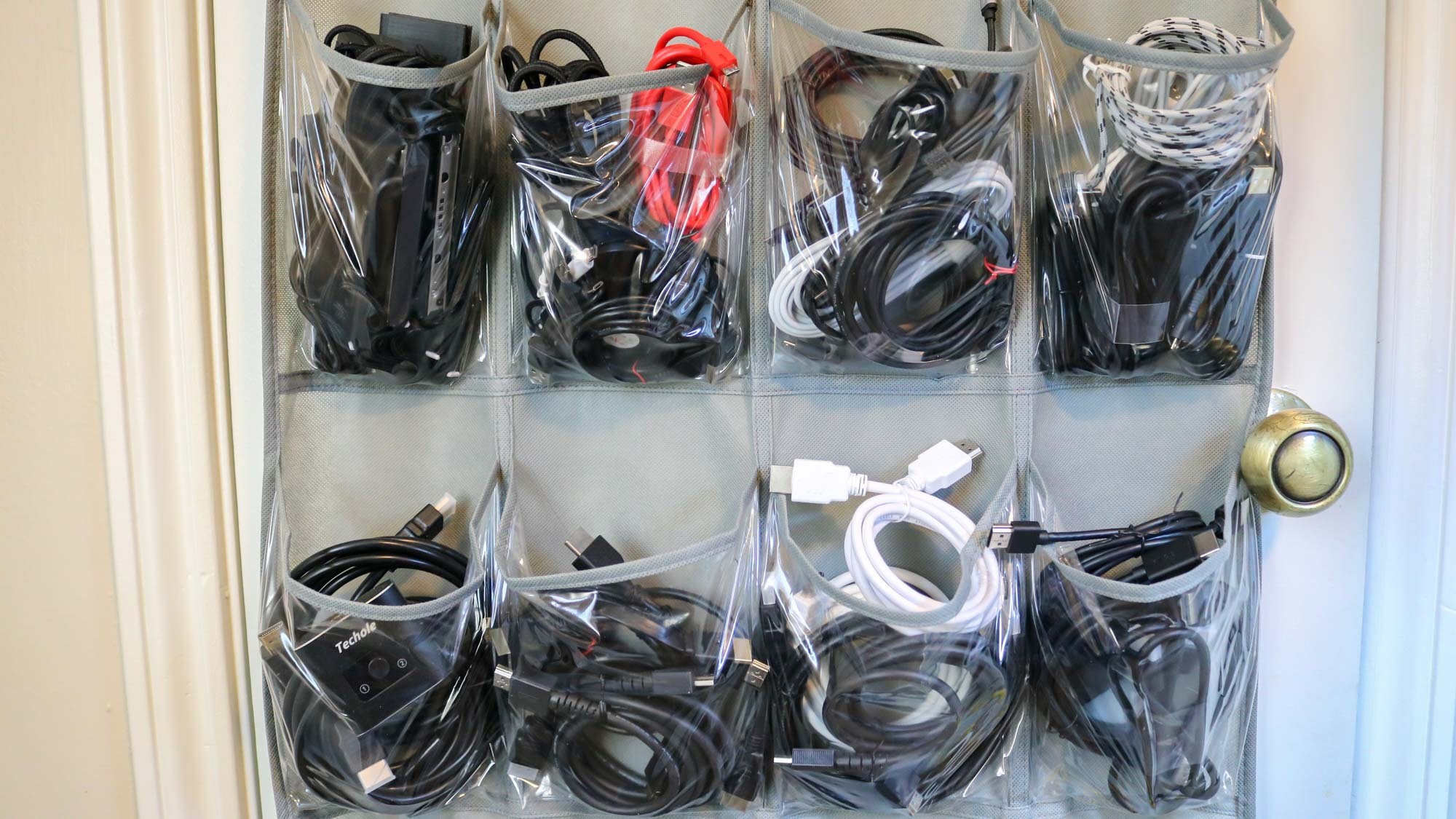I used this simple hack to tame my tangled box of cables

Take a look around your home and I guarantee that you’ll find a box or a junk drawer filled with cables and adapters. While saving your old cables can be useful, if you can’t find the one you’re looking for, you may end up buying another cable which just adds to the problem. And every new smartphone, laptop or other electronic device you buy comes with its own cable, further adding to the mess.
If you want to nip this problem in the bud once and for all, I have a solution that just might work for you. It certainly did for me.
Repurposing a tried and true solution
As someone who’s constantly trying out new devices and creating new desk setups, I knew I needed a solution to my problem of having too many wires in a disorganized mess.
Fortunately, while getting ready to move, I had already separated my various HDMI, micro USB, USB-C and other cables and put them in labeled plastic bags. Now I just had to find a way to store them where they would be both visible and easy to access.

I love to repurpose household items and I often find that some of the ideas I come up with are even more useful than an item’s original purpose. A few years ago, I used an over-the-door shoe organizer to store my retro game controllers. As I have more cables than I count, I figured I could try the same approach.
Not all over-the-counter shoe racks are see-through. Thankfully, I found one similar to this ($10, Amazon) that has see-through PVC pockets. This way, my cables won’t only be organized and easy to access, but I can also see what kind they are.
Organizing the cables

Now that I had a means of keeping my cables displayed and tidy, I just had to organize them in a way that they would be easy to find.
Get instant access to breaking news, the hottest reviews, great deals and helpful tips.
The over-the-door shoe rack I purchased has four columns and five rows with four pockets in each row. To make organizing all of my cables easier, I actually drew out my plan on paper. In the end, I came up with a system that would put my most frequently used cables in the middle with those I use less often at the top and bottom of the shoe rack.
At the top of my shoe rack, you’ll find power cables and power adapters. In the next row, I store all of my other adapters, USB flash drives, audio cables and other miscellaneous or proprietary cables. The row at the top of the picture above contains all of my USB-C cables, video game adapters and even a few mini USB cables for older mechanical keyboards. Underneath them, I have all of my micro USB cables and on the left side, some Joy-Con straps. Finally, the bottom two rows house my HDMI cables and my Ethernet cables.
Avoiding a repeat occurrence
While my solution certainly isn’t the prettiest, it works for me, especially as I have the shoe rack with all my cables hanging on the back of the closet door in my office. When I’m setting up a new computer or switching to a different keyboard, I just grab the cable or cables I need and I’m ready to go.
If you have a spare closet or door, you can do something similar. However, with some hooks or even some screws, you could mount this kind of shoe rack inside your closet to keep it out of sight. Likewise, you could organize your cables this way, roll up the shoe rack organizer and just unroll it when you need to get a cable.

To avoid ending up with another box or drawer full of wires, when I get a new device that comes with cables I don’t plan on using, I immediately go to my over-the-door shoe rack and put them in the corresponding pocket. This way, I always have extra cables and know where to find them when the need arises.

Anthony Spadafora is the managing editor for security and home office furniture at Tom’s Guide where he covers everything from data breaches to password managers and the best way to cover your whole home or business with Wi-Fi. He also reviews standing desks, office chairs and other home office accessories with a penchant for building desk setups. Before joining the team, Anthony wrote for ITProPortal while living in Korea and later for TechRadar Pro after moving back to the US. Based in Houston, Texas, when he’s not writing Anthony can be found tinkering with PCs and game consoles, managing cables and upgrading his smart home.
